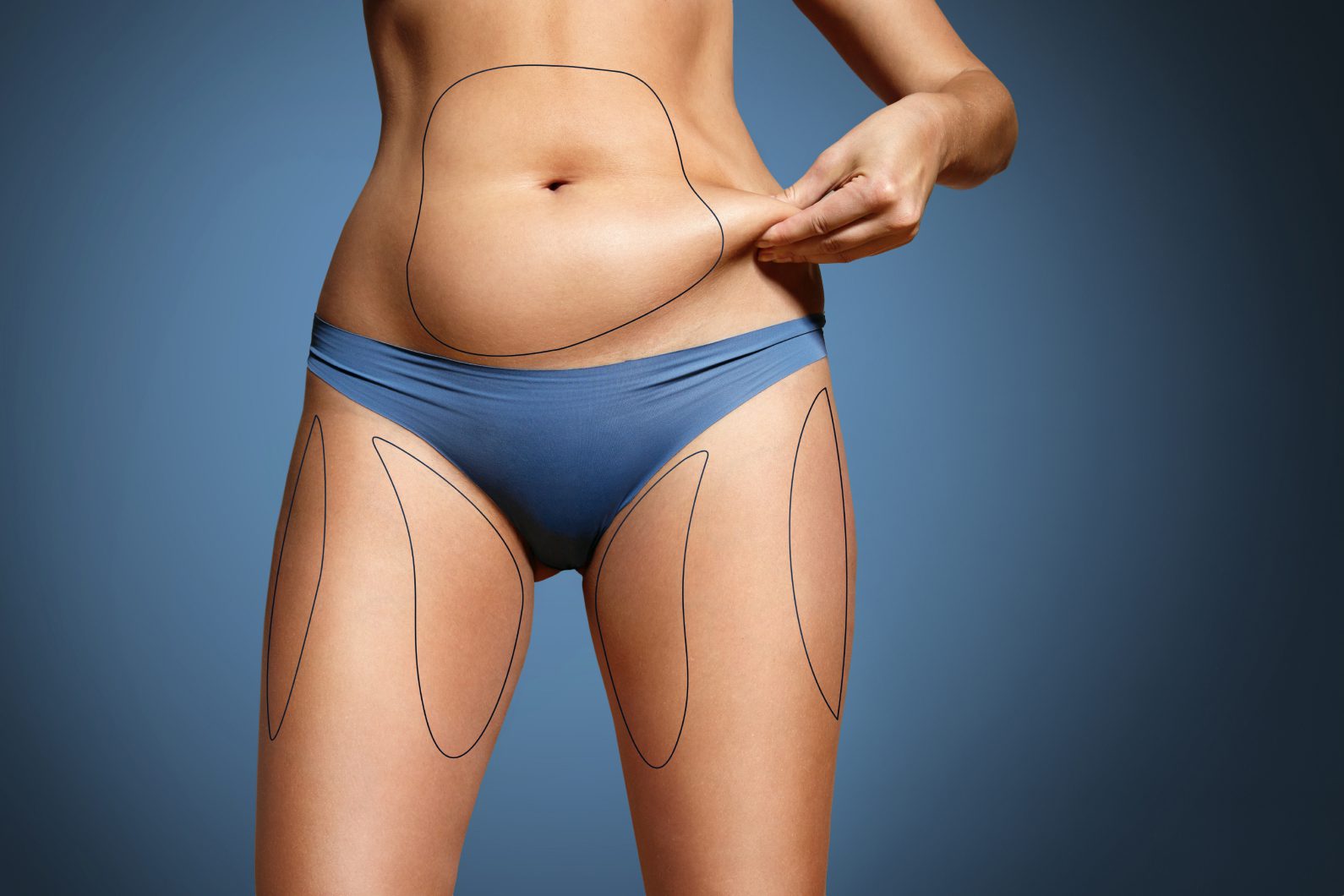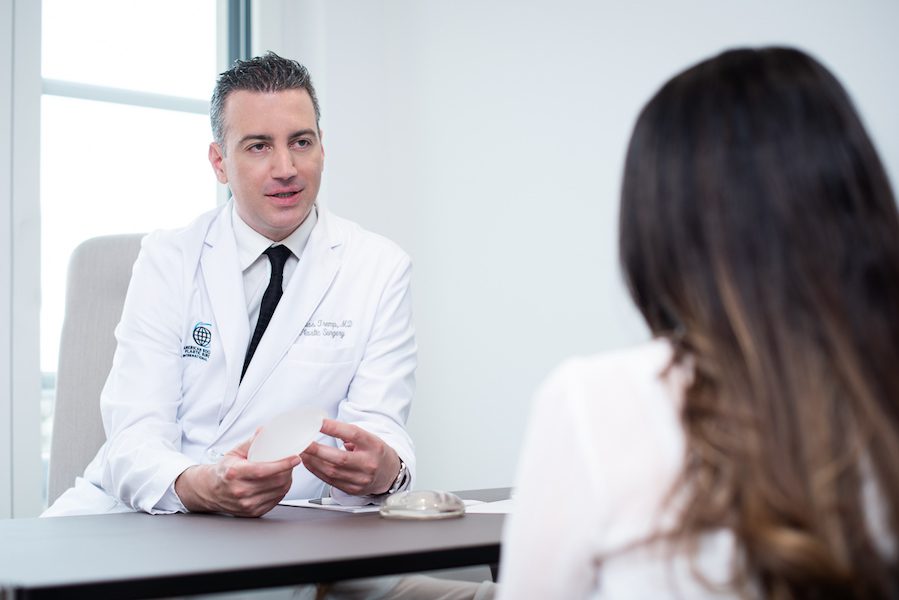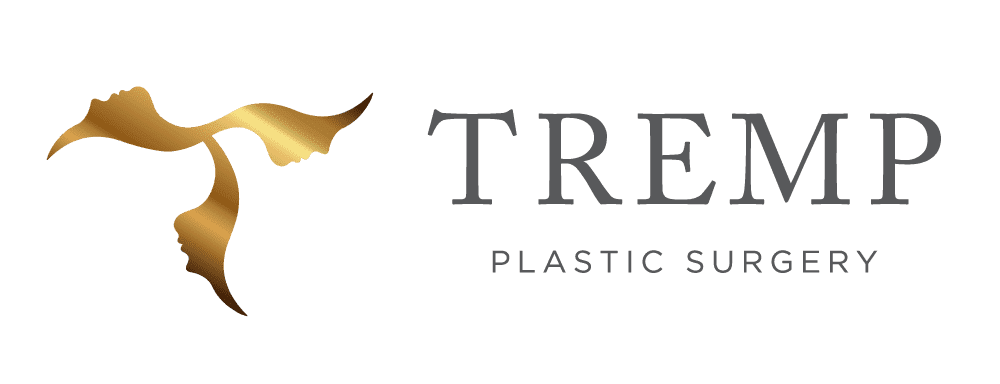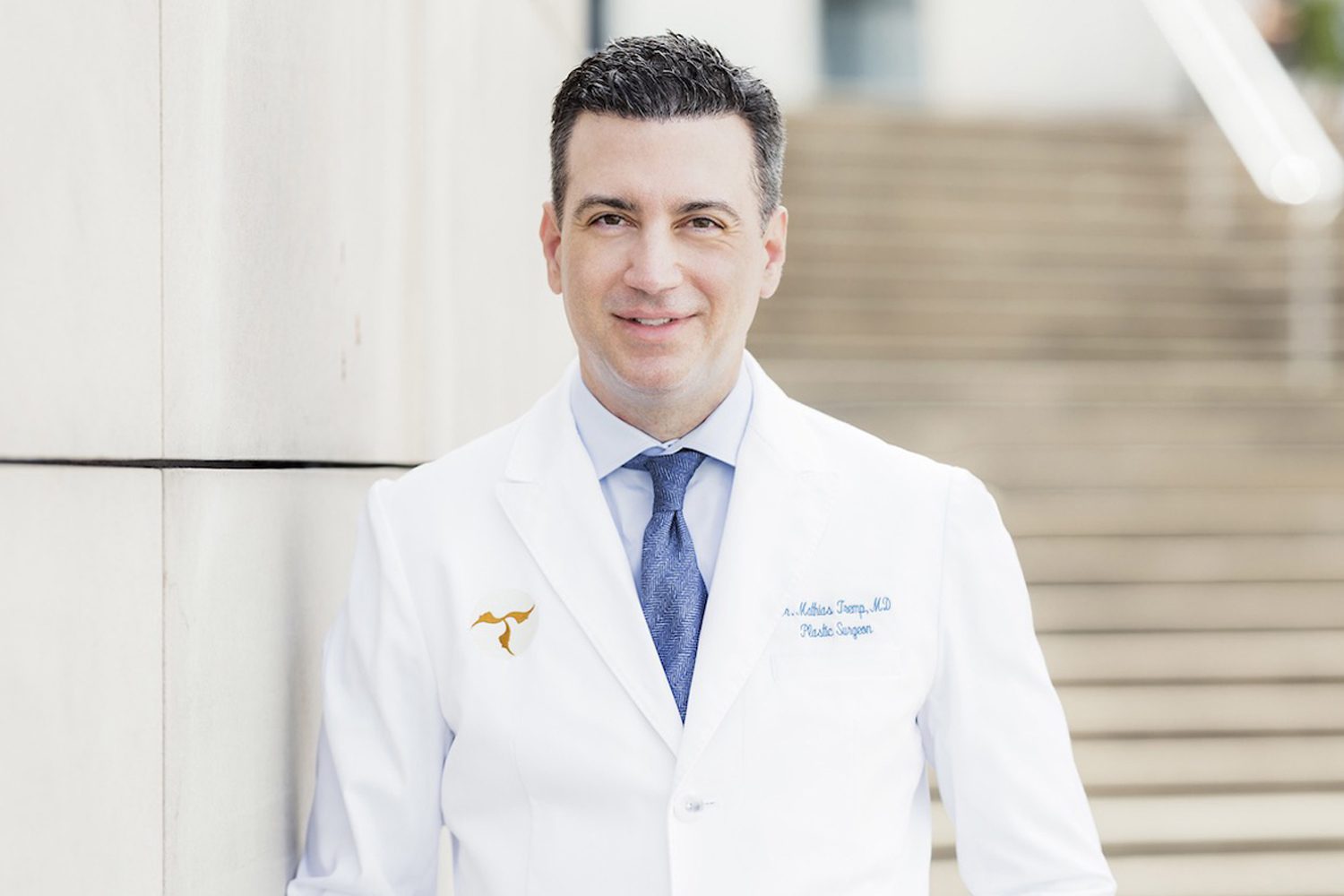- About
- Face & Skin
- Cellulite treatment
- Excessive sweating in women and men
- Facial and skin treatments
- Facial Surgery
- Hydrafacial treatment
- IV drips (vitamin infusions)
- Laser treatment
- Lip Lift
- Mesotherapy (skin structure )
- Special Offers by TREMP PLASTIC SURGERY
- Treatments with Skin Ceuticals
- Wrinkle and facial treatments with botulinum
- Wrinkle and facial treatments with filler
- Face
- Breast
- Body
- Offers
- Blog
- Contact
- EN
- DE
Liposuction

Liposuction against stubborn fat deposits
Stubborn fat deposits on the stomach, hips or thighs can persist despite regular exercise and a healthy diet. Liposuction offers a targeted solution for these problem areas.
Women often have unwanted kilos in the hips and thighs, while in men the fatty tissue typically accumulates in the abdominal area. Weight reduction often affects the face and chest, but the hips, lower abdomen and thighs have different fat tissue that is difficult to influence.
Known problem areas are the stomach, hips (love handles), thighs (riding breeches) and buttocks (buttocks). The male breast can also be liposuctioned as an unwanted fat pad.
Liposuction is the most popular aesthetic operation in Switzerland
Liposuction is the most popular aesthetic operation in Switzerland. It permanently removes excess fat cells and improves the body contour.
However, the long-term effectiveness depends on the patient’s lifestyle. After the operation, the suctioned fat cells are permanently removed. New fat cells can only form if the patient gains a lot of weight.
Our comprehensive treatment concept combines innovative technologies with proven methods to effectively rejuvenate and care for your skin.
Make someone special happy and give them a gift certificate for a consultation with PD Dr. Tremp.
Aesthetic breast corrections? Before and after pictures
 After
After  Before
Before Drag
Do you have any questions?
Arrange a consultation with PD Dr. Mathias Tremp

PD Dr. med. Mathias Tremp in a consultation
Before any procedure, it is crucial that you as a patient are fully informed. PD Dr. Tremp is ready to answer your questions and inform you about the benefits and risks of the operation.
Find out whether your desired operation is possible. Arrange your personal consultation appointment now.
Liposuction against stubborn fat deposits
Liposuction is not a means of general weight reduction. Its aim is to shape the body silhouette and create harmonious proportions. It is important to note that liposuction is not a method of weight reduction, but is used to treat specific problem areas.
A healthy lifestyle is still important. Swelling and bruising may occur after the operation, but these will subside over time. Ultimately, the aim of liposuction is not to reduce weight, but to create an appealing body aesthetic. Only if patients maintain a healthy lifestyle will the results be permanent.
Ideal candidates for the procedure
The following conditions are ideal for liposuction:
- Almost ideal body weight: People with stubborn fat deposits despite a healthy lifestyle.
- Firm, elastic skin texture: Good skin elasticity for aesthetic results.
- Realistic expectations: Clarity about the possibilities and limitations of liposuction.
- Healthy lifestyle: Willingness to maintain a healthy and active lifestyle.
Candidates should not have any serious health problems that could increase the risk of surgery. Liposuction is particularly suitable for improving body aesthetics through targeted contouring.
What is liposuction or liposuction?
Liposuction is a surgical procedure in which excess fatty tissue is removed. This is done through small incisions and the use of a suction cannula. The aim of the operation is to remove stubborn fat deposits and achieve a slimmer body silhouette.
Removal of benign tumours (moles, lipomas, age warts)
Liposuction is an invasive procedure that uses targeted techniques to permanently remove fat deposits and refine body contours. A special solution is injected into the fatty tissue to loosen up the fat cells.
The cells are then suctioned out using fine cannulas without damaging the surrounding tissue. Depending on the patient's individual needs and requirements, various techniques such as Vaser® liposuction or water-jet assisted liposuction are used to achieve the best possible result.
Lifestyle after liposuction
After successful liposuction, a balanced diet and regular physical activity are essential to maintain the results achieved in the long term. It is advisable to adapt your lifestyle and establish habits that support a healthy body composition. This includes, for example, an increased intake of proteins and vegetables as well as regular full-body training.
Careful aftercare and ongoing support from specialist experts are essential to ensure optimal and lasting shaping of the body. Adherence to the recommended behavioral measures and follow-up appointments after the operation contributes significantly to a satisfactory long-term result.
Preservation of the surgical result
Liposuction is a popular method for treating stubborn fat deposits. Typical problem areas are the lower abdomen, legs, thighs (saddlebags) and hip region (love handles) in women.
Men use liposuction to contour the upper torso area and to remove gynecomastia (enlarged male breasts) and fatty tissue around the neck. Liposuction can also be used on bat arms (upper arms) to remove excess fat and improve contours.
Overall, liposuction makes it possible to treat various areas of the body with stubborn fat deposits in order to achieve a harmonious body silhouette.
The role of nutrition and fitness
Nutrition and fitness are crucial for long-term results after liposuction. A balanced diet with essential micronutrients optimizes the metabolism. Regular physical activity promotes muscle building and prevents new fat deposits.
A long-term, healthy lifestyle is essential to maintain the new body contours. Professional nutrition and fitness plans can help to ensure the success of treatment and improve quality of life.
Dealing with obesity
Effectively combating obesity requires a holistic understanding and an interdisciplinary approach. This includes nutritional medical advice, psychological support and individually tailored exercise sessions.
Holistic programs aim to achieve long-term success, strengthen personal responsibility and increase well-being. As a result, behaviors can be established that prevent obesity and preserve the results of liposuction.
Causes and consequences of obesity
Obesity is caused by an imbalance between energy intake and consumption, which leads to an excessive accumulation of body fat. The causes are genetic factors, lifestyle, psychological aspects and environmental conditions. Obesity increases the risk of comorbidities such as diabetes and cardiovascular disease.
It also affects mental health and can reduce life expectancy. Sustainable weight reduction, possibly supported by liposuction, improves the quality of life of those affected.
Alternatives to liposuction for severe obesity
Liposuction is often not suitable as an initial measure for weight reduction in the case of severe obesity.
- Change of diet: A professionally supervised change in diet to establish long-term eating habits.
- Sporting activities: Regular exercise, adapted to the individual performance level, supports weight loss.
- Behavioral therapy: If obesity has psychological causes, behavioral therapy can be helpful.
- Drug treatment: A doctor may prescribe special medication for hormonal imbalances or metabolic disorders.
- Bariatric surgery: Surgical methods such as gastric bypass or gastric banding are available for extremely overweight people. Choosing the right method requires individual and comprehensive medical advice.
Lipedema is a special case.

Lipoedema is a pathological change in the fatty tissue and lymphatic vessels that causes considerable thickening of the affected areas. Liposuction can achieve a significant reduction in weight in lipoedema patients, although several sessions are usually necessary for optimal results.
Liposuction for men

Liposuction is particularly popular with men for problem areas such as the stomach and hips. It can effectively help to reduce the unwanted “life belt”, in addition to a healthy lifestyle. However, liposuction is not suitable for every case, especially not for a “beer belly” where the fat is stored around the organs.
In addition to the abdomen and hips, other areas such as the chin, neck, arms, back, buttocks, thighs and calves can also be treated to achieve a more harmonious body shape. Liposuction can also help with gynecomastia by removing excess fatty tissue from the breasts.
Intervention, procedure, ability to work, risks and aftercare
Liposuction is performed on an outpatient basis under local or general anesthesia. A saline solution is injected into the fatty tissue before the fat is removed with a thin cannula. The results are immediately visible and permanent.
Bruising and numbness may occur after the procedure, which will subside within a few weeks. Compression garments are recommended to support the healing process. Post-operative pain is comparable to muscle soreness. Most patients can return to work within 3 to 6 days.
Aftercare after liposuction?
After liposuction, it is important to observe the following aftercare and care measures:
- Wear a compression garment for a few weeks to promote healing and reduce swelling.
- Avoid physical exertion and heavy activities so as not to strain the treated areas.
- Take prescribed medication to relieve pain and prevent infection.
- Keep the treated areas clean and dry, wear loose clothing to avoid friction.
- Protect the treated areas from direct sunlight and wear sunscreen.
- Follow your doctor's instructions regarding follow-up appointments to monitor the healing progress.
Are the results of liposuction permanent?
Nutrition and fitness are crucial for long-term results after liposuction. A balanced diet with essential micronutrients optimizes the metabolism. Regular physical activity promotes muscle building and prevents new fat deposits.
A long-term, healthy lifestyle is essential to maintain the new body contours. Professional nutrition and fitness plans can help to ensure the success of treatment and improve quality of life.
Recovery time after liposuction?
The recovery time after liposuction varies from person to person, but usually takes a few weeks. During this time, it is important to limit physical activity and take it easy. Swelling, bruising and slight pain may occur, but can be controlled with medication and compression garments.
Rest and regular check-ups with your doctor are important for optimal recovery. Follow your doctor's instructions to ensure a quick and healthy recovery.
What are the costs associated with liposuction?
The cost of liposuction varies depending on the individual case. They include the surgeon’s fees, anesthesia, surgical facilities, materials and aftercare. The size of the area to be treated and the time required influence the cost. The investment in well-being and self-confidence is reflected in the price. Contact an experienced plastic surgeon for precise information and a detailed cost estimate.


